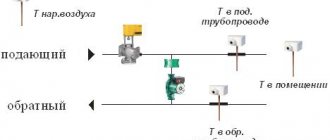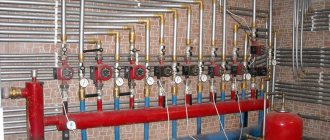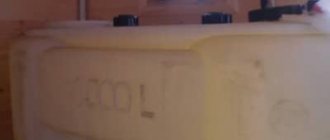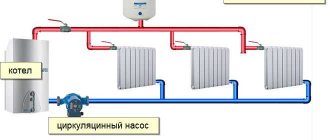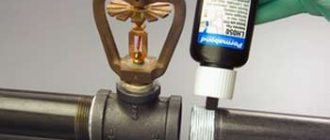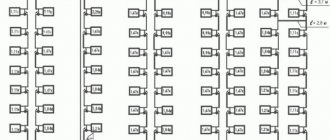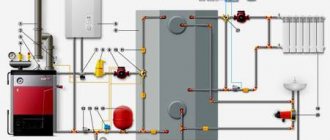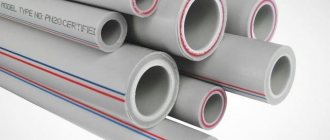In what cases is it compiled?
The act is required when:
- Commissioning of new equipment. The certificate will confirm that each element is in its place, the installation was carried out responsibly, and the system is working.
- The heating season is approaching. After a summer break in work, the pipes could fail. After checking their capacity, a report is drawn up.
- Already carried out repair work.
- The occurrence of contained emergency situations on the pipeline. In this way, specialists identify the amount of work required and the weak points of the existing heating network.
For the uninterrupted operation of the heating system, preventative control checks and reliable information about the quality functioning of the system upon startup are necessary.
Additional work
After washing pipes and other equipment, it is advisable to perform pressure testing. This additional procedure will allow you to check the tightness of the entire system and identify places where air or water may escape. Such actions are not mandatory, but highly desirable. They correspond to the interests of both the customer and the contractor. Upon completion, both will be able to verify the quality of the previous stage. The completion of the work is recorded by the act of flushing and pressure testing the heating system. A sample of it will look like a table that contains a list of all activities carried out during such a procedure.
Against each of the points, the specialist must make a note of completion. At the end, as usual, the customer and the contractor put their signatures, confirming the fact of the work. Experts sometimes call this procedure a hydraulic test, since most often such a test is carried out using water. It is believed that the air may be more dangerous when serious faults are detected. Therefore, many people prefer to take the easier path.
The essence and types of crimping
Nowadays heating is most often carried out by a “water circuit” system. At the same time, heated water circulates through the works, imparting its thermal energy to the premises. Leaks are unacceptable; the pipeline must be completely sealed for normal operation. Pressure testing specifically creates a larger volume in the pipe than normal.
When this is done using air, it is called pneumatic pressing.
When using water, then hydropressing. The latter method is considered safer and therefore more popular. For this reason, an example of hydropressing is provided as a form.
When testing, it is recommended not to exceed the pressure inside the pipe more than 15 MPa. If we are talking about raising pressure with water, then there are limitations. The maximum possible pressure should not exceed the normal operating pressure by more than 30%.
In multi-storey buildings they resort to pneumatic pressure testing if the pipes are very old and there is a risk of flooding. But then there is a level of risk and all residents must be notified of the tests being carried out.
The work process is simple, but multi-stage. The algorithm looks like this:
- The necessary materials and equipment are being prepared.
- Draining the liquid that was previously in the heating system.
- Uploading a new one.
- Create the highest possible test pressure.
- Taking control measurements after 10 minutes.
- Flushing, adjusting the heating system to normal pressure levels inside.
- Documentation of work performed, generation of reports and acts.
But this is how the list of procedures looks only if there are no “thin spots” in the heating system and, accordingly, the tightness in it is not broken. If the pressure drops quickly and does not hold, then the system needs repair work. In such a situation, the specialist performs the necessary actions (replacing the pipe, sealing connections, cleaning, etc.), and then begins crimping from the very beginning. Only a heating system that has passed the test is allowed into the heating season.
Important nuance! Pressure testing should be carried out after cleaning and flushing the pipes. Otherwise, salt and other deposits inside them can mask possible external damage and breakthroughs.
If there are deposits of about 1 cm on the inner surface, then this reduces the overall heat transfer and efficiency by 15 percent or more of the overall indicators. To document the cleaning, a special report is also drawn up.
Methods for performing work on flushing heating systems
There are 3 main methods used to clean equipment:
- hydropneumatic;
- dynamic;
- chemical.
The hydropneumatic method involves using hot or cold water, into which a stream of compressed air is mixed from a compressor, creating a wave and air bubbles. Liquid under pressure removes all deposits and scale on the walls of pipelines. Then they draw up an equipment washing report.
Equipment for flushing the heating system.
Chemical washing is carried out using various chemical reagents and a container equipped with a pump. Used reagents must be disposed of by a specialist.
The chemical method is often used for cleaning work, because tap water used in heating systems does not have good characteristics.
The dynamic method is the removal of scale, rust, chemical deposits, sodium and calcium salts using special nozzles that create high pressure (water hammer).
A modern method is the Typhoon pneumatic gun, which allows for spot cleaning of radiators and clearing blockages in water pipes.
Sometimes a comprehensive washing of equipment is performed, which has a number of advantages:
- democratic price;
- the ability to clean pipes with small cross-sectional diameters and complex structures;
- volumetric cleaning;
- performing work in a short time.
Watch the video and study the sequence of work when cleaning equipment from contaminants.
The procedure for drawing up a report for cleaning the system
The act signed by the Customer (that is, you) for flushing the heating system of a residential building is a document characterizing the quality of the work done. It must be formatted correctly and contain the following information:
- date of completion of work and preparation of the document;
- method of flushing heating networks of a residential building;
- volume of water (entered into the document according to meter readings);
- flushing fluid temperature;
- feedback from the Customer on the quality of the cleaning performed;
- signature of the responsible contractor and the head of the contractor.
Only if you have all the listed points and, of course, well-functioning heating, you can endorse this document and proceed to agreeing on payment papers. But remember that it must be preceded by a pipeline testing report, a sample of which is given below:
To give you an idea of the essence of the issue, we also provide a sample report for flushing the heating system:
What is pressure testing of a heating system?
Pressure testing or hydraulic testing is a test of a heating system for leaks. To do this, an excess pressure is created in it, as close as possible to the value of the maximum pressure determined by calculation.
The main task is to simulate a situation similar to a water hammer, which can occur in an operating heating system at any time.
Pressure testing of the heating system
The heating system is pressure tested before the start of each heating season, as well as after completion of installation and repair work. Experience shows that pressure testing of a heating system allows us to identify all defects hidden during installation, and its successful implementation is the best guarantee of trouble-free operation of the equipment in the next heating season.
Experienced building owners who approach heat supply issues responsibly conduct hydraulic tests immediately after the end of the heating season, which in most of our country lasts until April 16, which allows problems to be corrected in a timely manner and then a repeated hydraulic test is performed.
Pressure testing of the heating system of a country house
Typically, pressure testing of the heating system is timed to flush it and eliminate various visible problems or carry out scheduled maintenance work.
Pressure testing of the heating system consists of several stages:
- Filling the system with water
- Injecting pressure into it
- Monitoring the readings of instruments measuring pressure in the system
- Visual inspection of the presence (absence) of leaks
- Troubleshooting detections
- Drawing up a certificate of pressure testing of the heating system
- Filling the system with water
The first stage of hydraulic testing is filling the system with water. If we are talking about a working heating system, it is stopped, cooled, and the coolant is drained.
Pressure testing of the heating system
Water is supplied to the system through a special valve, most often a ball valve, called a “drainer” and located, as a rule, in the elevator unit of the heating system or in the boiler room, on the return pipeline. Water can be supplied directly from the tap.
While filling the system with water, air is released and air pockets are removed. At the same time, they also check for leaks.
air pockets in the heating system
Please note that when performing pressure testing of the heating system, water is supplied only from below. If water is poured from above, there is a high probability of air entering the system and forming air pockets in it.
How is joint work with a contractor organized?
In addition to the final act, indicating high-quality work performed, you will need to draw up and sign a number of other documents together with the contractor. All papers drawn up in accordance with the law will give you the opportunity to make claims to the contractor in the event of poor-quality washing or in the event of material damage in the form of damage to system elements. This will also allow you to defend your rights in court.
Let’s imagine the sequence of actions of the contractor, in which you will also take part:
initial visual inspection by representatives of the organization;
- choosing a washing method and agreeing it with you;
- submit for review and signing an estimate that reflects the types of work and materials used, as well as the contract price;
- enter into a contract;
- then the heating system of the residential building itself is flushed;
- acts are drawn up for hidden work (if any);
- testing (pressure testing) of the pipeline network is carried out, which is confirmed by the relevant document;
- a report of the washing performed is drawn up, which you must endorse if there are no complaints against the contractor.
Note. The official document indicating hidden work must be accompanied by photographic evidence of the fact that these operations were performed.



